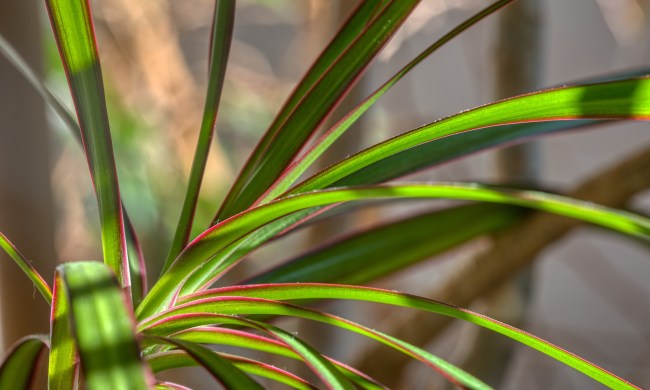Some plants just won’t be ignored! The staghorn fern is a unique and showstopping plant that would make an excellent addition to any plant collection. With their long leaves and unique growing habits, it’s no wonder gardeners all over want to try growing one of these delightful plants. However, caring for them can be tricky. To help you succeed in your staghorn fern endeavors, here’s everything you need to know about their care. Keep your staghorn ferns happy and healthy with these tips and tricks.
What is a staghorn fern?

The staghorn fern, Platycerium bifurcatum, are native to tropical areas in Asia and Australia and can even be found in the U.S. in states such as Florida. The staghorn fern is a type of plant called epiphytes, which simply means it lives by growing on another plant. In this case, the staghorn fern grows on large trees. These ferns can grow up to 2 or 3 feet wide and two to three feet tall, but they are slow-growing plants, so don’t expect to see too much progress quickly. Like other types of ferns, staghorn ferns prefer warm, humid weather, which can make growing them outdoors tricky.
How to care for a staghorn fern

Staghorn ferns are not beginner-friendly plants and can be picky when it comes to care. Unfortunately, they’ll quickly die on you if you’re not careful. So let’s go over their specific care needs to ensure you can keep your staghorn fern alive.
Water
You can’t water these plants like you would your other houseplants. For staghorn ferns, watering is a two-step process. First, you need to mist the plant while focusing on the underside of the fronds. Second, you’ll need to soak the fern. Soak it in a sink or bathtub for 10 to 20 minutes, then allow it to drip dry before rehanging it.
We suggest watering your staghorn every week during the hotter months, then going to every other week during the cooler months. However, this schedule should be adjusted depending on the conditions of your home. If you have a warmer home, you’ll need to water more often; alternatively, if you keep your home on the cooler side, you’ll likely be able to go extended periods without watering the plant.
Light
They want bright but filtered light and need to be protected from direct sunlight. Direct sun will burn the plant and make it dry out faster, which will kill the plant quickly.
Food
Feeding this plant requires nothing special. A water-soluble balanced fertilizer will work perfectly. Apply this once a month during the growing seasons, and then not at all during the winter months.
Temperature
Surprisingly, staghorn ferns are relatively cold-hardy plants, but we still suggest keeping the temperature in your home above 50 degrees. You’ll also want to make sure the temperatures don’t get too hot.
Humidity
The staghorn fern loves humidity and will thrive in a home with 60 percent humidity. Most homes sit around 40 to 50 percent. You can use a humidifier to increase the moisture in your home or spray the plant with mist in the morning and evening to make up for the lack of it in the air.
Toxicity
These plants are nontoxic to both cats and dogs, so you don’t have to worry or rush to the vet if one of your furry friends decides to take a bite. This probably won’t be an issue, though, since these are typically mounted on a board and hung on the wall.
Additional care
The leaves of this plant are actually called fronds, and this plant has two types of fronds. First are the larger, more prominent “leaves” that gave the plant its common name since they look like the antlers of an elk or deer. The other type of fronds are called shield fronds, which are the flat, round, and hard “leaves” that surround the base of the plant, protect the roots, and aid in the absorption of water and nutrients. While these fronds start green, they’ll eventually brown and crisp up. It’s essential not to remove them; this is the natural lifecycle of the plant and doesn’t mean it’s dying.
Is a staghorn fern the same as an elkhorn fern?

When looking for staghorn fern information or seedlings, you may also get plenty of elkhorn ferns, as well. Looking for information on telling the two ferns apart can be confusing, as sources don’t always agree on the similarities or differences. In actuality, staghorn and elkhorn ferns are the same plant — Platycerium bifurcatum.
However, many people also refer to the entire Platycerium genus as both staghorn and elkhorn ferns. This can lead to some sources describing the difference between two different species of Platycerium and referring to one as a staghorn and the other as an elkhorn, when, in reality, both could be referred to as either. So, when shopping for your staghorn fern, you can look specifically for Platycerium bifurcatum or explore other Platycerium species!
Don’t feel intimidated by this unique and picky plant. You now have the tools and information you need to care for it. While they may not be the perfect fern for growing outdoors, staghorn ferns can make great indoor plants under the right conditions. Be patient, and keep trying. Eventually, you’ll find success in growing these unique and delightful ferns.



